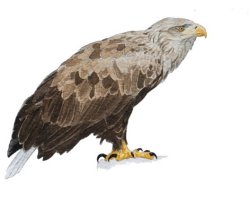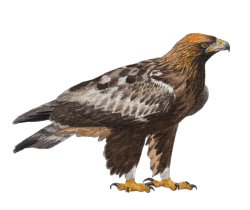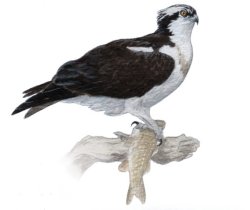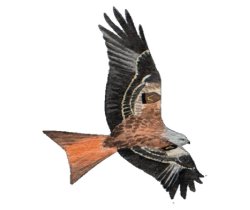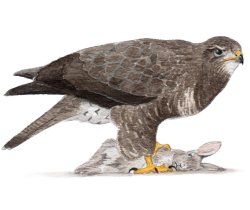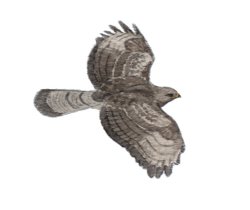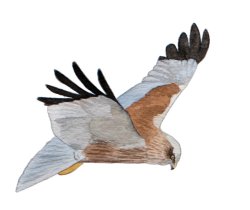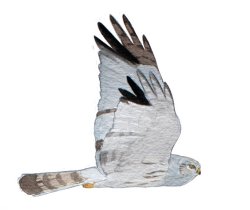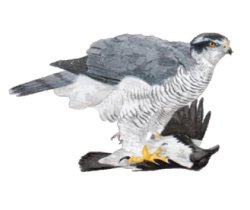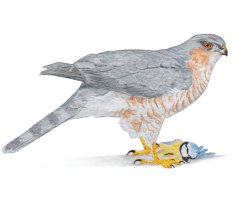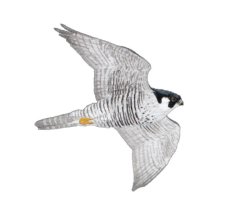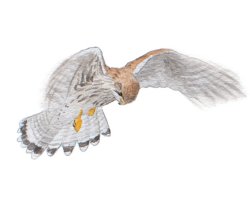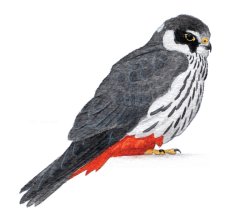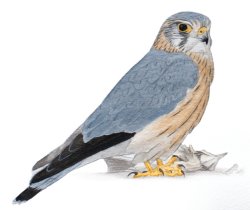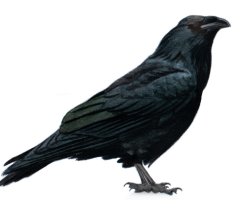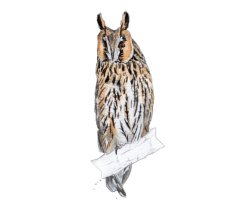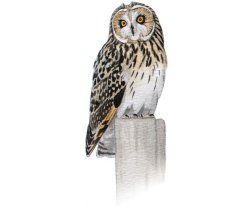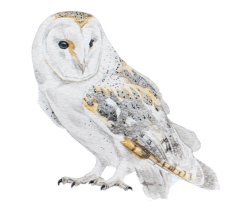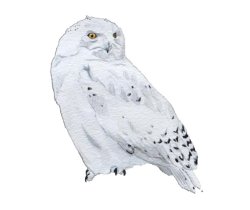Species Profiles
Raptors, or birds of prey, include the following types of birds: eagles, hawks, kites, buzzards, falcons, the osprey, and owls. They are all predatory species. Many other bird species have predatory traits but raptors are defined as those which typically catch live prey with their feet (although some also eat a lot of carrion). The word ‘raptor’ is derived from the Latin verb ‘rapere’, meaning to “take” or “seize” by force.
Raptors are specially adapted for their predatory role with sharp talons, excellent eyesight and a hooked beak to tear into flesh. Owls are particularly well adapted to their night-time environment as they have soft, velvety feathers which reduce the sound of flapping and allow the owl to fly silently in search of prey.
Many raptor species (but not all) are unusual in that the female is often larger than the male. This is called Reversed Sexual Size Dimorphism. In some raptor species, such as the Peregrine, this size difference is very pronounced and the female can be as much as one-third bigger than the male.
Raptors are special. There is something about them that has fascinated humans for centuries. They are iconic symbols of the natural world, now recovering from past human actions that caused many of them to vanish. They still need our protection as they make their comeback.
These species profiles are to help people recognise and identify the birds of prey and owls which may be seen in Northern Ireland.
These species profiles have been prepared, designed and edited by R. Tingay, M. Ruddock and A. Murray with artwork by R. Vaughan. This project was funded by the NGO Challenge Fund 2014 and a copy of the NIRSG Raptor Booklet can be downloaded here.
